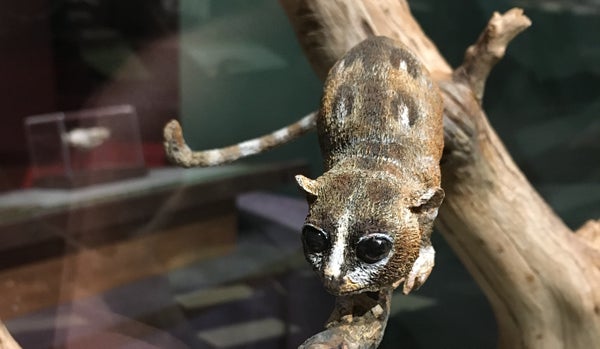This article was published in Scientific American’s former blog network and reflects the views of the author, not necessarily those of Scientific American
Last week, just because I wanted to, I decided to paint my nails. I was due to get my hair dyed a bright shade of blue, anyway, so I figured I’d just lean into the punk aesthetic and spend a little time spreading glossy black over the keritanized chips on the ends of my fingers. And as I did so, I thought about a paper recently published in the Journal of Human Evolution. The fact that I was brushing black over nails, rather than claws, is an evolutionary happenstance that puts me in touch with my Eocene ancestors.
“Euprimates are unusual among mammals in having fingers and toes with flat nails,” Doug Boyer and colleagues write in the abstract of their new study. The earliest of our primate ancestors had claws, but, somewhere along the way to the origin of the more specific subset called euprimates, claws were generally lost in favor of specialized little shields at the digit tips.
But there is an exception to this rule, and it’s one that might help elucidate how and when claws drew back in favor of nails. Among some modern primates - namely lemurs, lorises, and tarsiers, and two New World monkeys - the second toe on each foot has a toilet claw. (And tarsiers, just to be weird, have a second toilet claw on their third toe.) It’s a grooming appendage that’s retained its sharp point. Anatomists debate how this relates to the older claw types, as well as whether the grooming claw is an old piece of skeletal inheritance or a more recent modification. That latter question is at the center of the new paper.
On supporting science journalism
If you're enjoying this article, consider supporting our award-winning journalism by subscribing. By purchasing a subscription you are helping to ensure the future of impactful stories about the discoveries and ideas shaping our world today.
Paleontologists had previously found two early relatives of lemurs and lorises with grooming claws, meaning that the trait was present along their lineage. But what about the other half of the primate family tree - the haplorines, or tarsiers and the anthropoid primates that include us in their membership? Boyer and colleagues report on fossil primate toes found in the Eocene strata of Wyoming that now answer this question.
The grooming claws are isolated remains from three different sites in three distinct parts of the Eocene of Wyoming. The oldest among them goes back to about 56 million years ago. This is when subtropical forests covered much of the American west and primates were coming into their own, the prehistoric equivalents of lemurs and tarsiers inhabiting this verdant realm. Paleontologists have been studying these relatives of ours for over a century, allowing Boyer and coauthors to narrow down the attribution of the toe bones to a group called omomyiforms. These were small, tarsier like primates related to the ancestry of the greater haplorine group to which we belong.
So what does all this mean? Boyer and colleagues bring previous studies and other lines of evidence to come up with a scenario that goes something like this:
The earliest relatives of primates had toes tipped with claws, and they couldn’t grasp branches. Their feet looked more like those of modern tree shrews. As primates evolved a the ability to grasp, however, most of the critical pinch was done by the first and fifth digits - the equivalents of your big and little toes - and this freed up the toes in the middle for other functions. Grooming was one of those useful alternate activities that became possible.
Thanks to these newly-discovered fossils, we now know that the ancestors of lemurs as well as those of anthropoid primates had grooming claws on their second toes. A specialized toilet claw was probably a trait present in the last common ancestor of all living primates, later lost with the evolution of monkeys (meaning it had to evolve a second time in the few New World monkeys that have grooming claws). Once anthropoid social structures allowed others to do the grooming for you, there wasn’t as much as need to pick through your fur yourself.
If it hadn't happened earlier, our hominin ancestors probably would have lost grooming claws, anyway. The biomechanical constraints of walking upright on two legs severely limited our flexibility, and, as far as I'm concerned, I'm happy enough not having to flex my ankle over the back of my neck to comb my hair. But even though the actual evolutionary change occurred long ago, I'm glad we know a little more about how claws were switched out for nails and the history of the peculiar grooming claw that our ancestors eventually lost. I can look at my nails as remnants of a distant past, a whisper of life in the trees that we've kept even as we stand on the ground.
